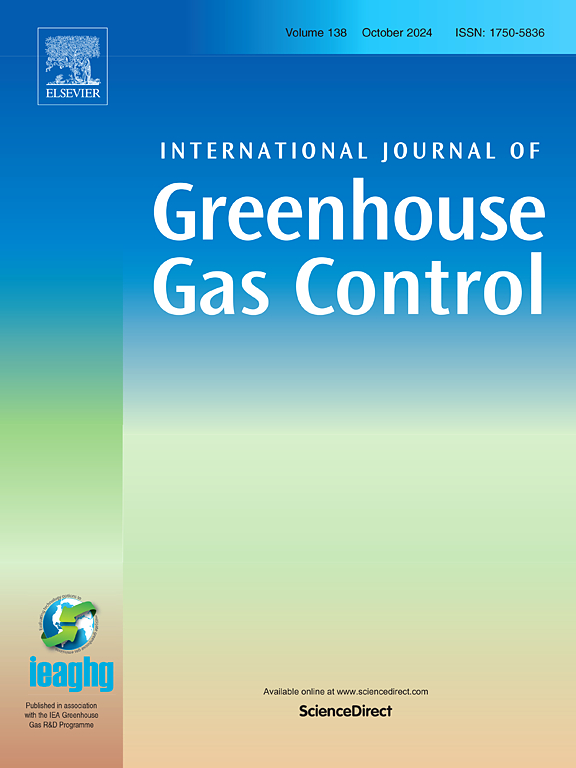Accounting for chemical impacts on mechanical properties in coupled simulations of CO2 injection into a depleted chalk field
IF 4.6
3区 工程技术
Q2 ENERGY & FUELS
International Journal of Greenhouse Gas Control
Pub Date : 2025-02-01
DOI:10.1016/j.ijggc.2025.104324
引用次数: 0
Abstract
The Bifrost project aims at repurposing the Harald West sandstone field as the primary target and the neighboring Harald East chalk field as a potential upside for CO2 storage. One challenge in assessing the feasibility of CCS in chalk is the contradictory experimental results reported in literature and indicating both a softening and strengthening of rocks in contact with supercritical CO2. To account for this uncertainty, coupled hydro-mechanical-chemical simulations are conducted and the storage capacity and deformation behavior of the depleted Harald East field are assessed under three different scenarios. The supercritical CO2 is assumed to have no effect on chalk's mechanical properties (scenario 1) as well as a strengthening (scenario 2) and softening effect (scenario 3). The results indicate that the ultimate storage capacity is primarily controlled by chalk compaction occurring during hydrocarbon production with a negligible impact of porosity reduction caused by CO2 injection. Besides, assuming a strengthening or softening effect of CO2 on rock strength has a minor impact on overall reservoir and overburden deformation. Only 4 % discrepancy is predicted in reservoir and seafloor subsidence between scenarios 2 and 3. Finally, irreversible deformation during CO2 injection is spatially restricted around the injectors due to the difference in propagation velocities between the CO2 and pressure fronts. Recalling that scenario 3 considers the most pessimistic experimental results reported in literature in terms of mechanical alteration of rock by supercritical CO2, this study reports encouraging results on the feasibility of re-purposing depleted chalk reservoirs as storage sites.
求助全文
约1分钟内获得全文
求助全文
来源期刊
CiteScore
9.20
自引率
10.30%
发文量
199
审稿时长
4.8 months
期刊介绍:
The International Journal of Greenhouse Gas Control is a peer reviewed journal focusing on scientific and engineering developments in greenhouse gas control through capture and storage at large stationary emitters in the power sector and in other major resource, manufacturing and production industries. The Journal covers all greenhouse gas emissions within the power and industrial sectors, and comprises both technical and non-technical related literature in one volume. Original research, review and comments papers are included.

 求助内容:
求助内容: 应助结果提醒方式:
应助结果提醒方式:


